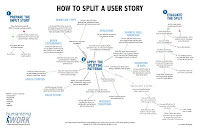hen you ask for feedback, you’re not just gathering opinions—you’re making a implicit promise to listen and think about the feedback . The person giving it needs to feel heard. That doesn’t mean you have to do exactly what they say, but you do have to respond with honesty, humility, and genuine respect. If you can’t act on it, explain why—openly and without defensiveness.
Some people dismiss this as “touchy-feely.” Don’t. If you get it wrong, the fallout can be ugly.
The Day Feedback Went Spectacularly Wrong
At a previous company, I sat in an open-plan office where my team shared space with another group I’ll call Team Marmalade, the where working on Project Indigo. They were a constant source of vicarious learning—and sometimes cautionary tales.
Most managers, when they need to discuss sensitive topics, book a private meeting room. It’s quieter, more focused, and free from an audience. For reasons only he knew, Team Marmalade’s manager decided to skip the boardroom and hold an important meeting right in the middle of the cubicles. I heard everything. So did the entire office. And by the end, I suspect he wished no one had.I suspect he wished no one had.
Most managers when talking to their team about important and Most managers, when discussing important or sensitive topics with their teams, book a boardroom. These rooms are quiet, private, and free of interruptions. For reasons only he knew, Team Marmalade’s manager decided to hold an important meeting right in the middle of the cubicles. I heard everything. The entire office heard everything. And unfortunately, so did his team. Normally, it’s a good thing when a team hears their manager. But by the end of this particular meeting, the manager likely wished everyone would just forget it had ever happened.
The meeting began reasonably enough. The manager explained that the team’s process wasn’t working, results were slipping, and change was needed. He then invited the team to share ideas.
They did—enthusiastically. They identified problems, proposed fixes, and mapped out ways to boost productivity. The suggestions were clear, practical, and—if implemented—would have solved much of what he’d raised.
But with each idea, the manager’s expression grew more and more alarmed. Eventually, he cut them off:
“I can’t tell upper management any of this. We’ll just have to stick with what we were doing.”
The Downward Spiral
Morale dropped like a stone. Productivity followed.
A few weeks later, the team leader (not the manager) managed to lift spirits through… let’s say creative morale-boosting tactics. They might have worked if results had soared. They didn’t. The team’s output improved slightly but never reached even the low levels from before the “feedback incident.”
Worse, the team’s attitude shifted. On the surface, they seemed fine. Underneath, they were frustrated, angry, and disengaged. Nothing had really been forgiven—or forgotten.
Then one day, while the manager was offsite and the team leader’s “creative” tactics were in full swing, upper management walked in. The scolding was loud, public, and humiliating.
And still—had all the managers forgotten meeting rooms existed?
Morale collapsed again. So did productivity. This time, recovery took months.
And this time, it took a long time for Team Marmalade to recover.
This isn’t the only time I’ve seen a request for feedback go wrong—but it was definitely the worst.
If you don’t treat feedback with respect, those giving it can become cynical, resentful, and disengaged. By the time you’re ready to take action, your team or community may no longer care to listen.
The Lesson
I’ve seen feedback requests go wrong before, but this one was catastrophic.
If you ask for input but then ignore, dismiss, or shut it down, you teach people that speaking up is pointless. Cynicism sets in. Engagement erodes. And when you are finally ready to make changes, it may be too late—because the people you need have stopped caring.



















